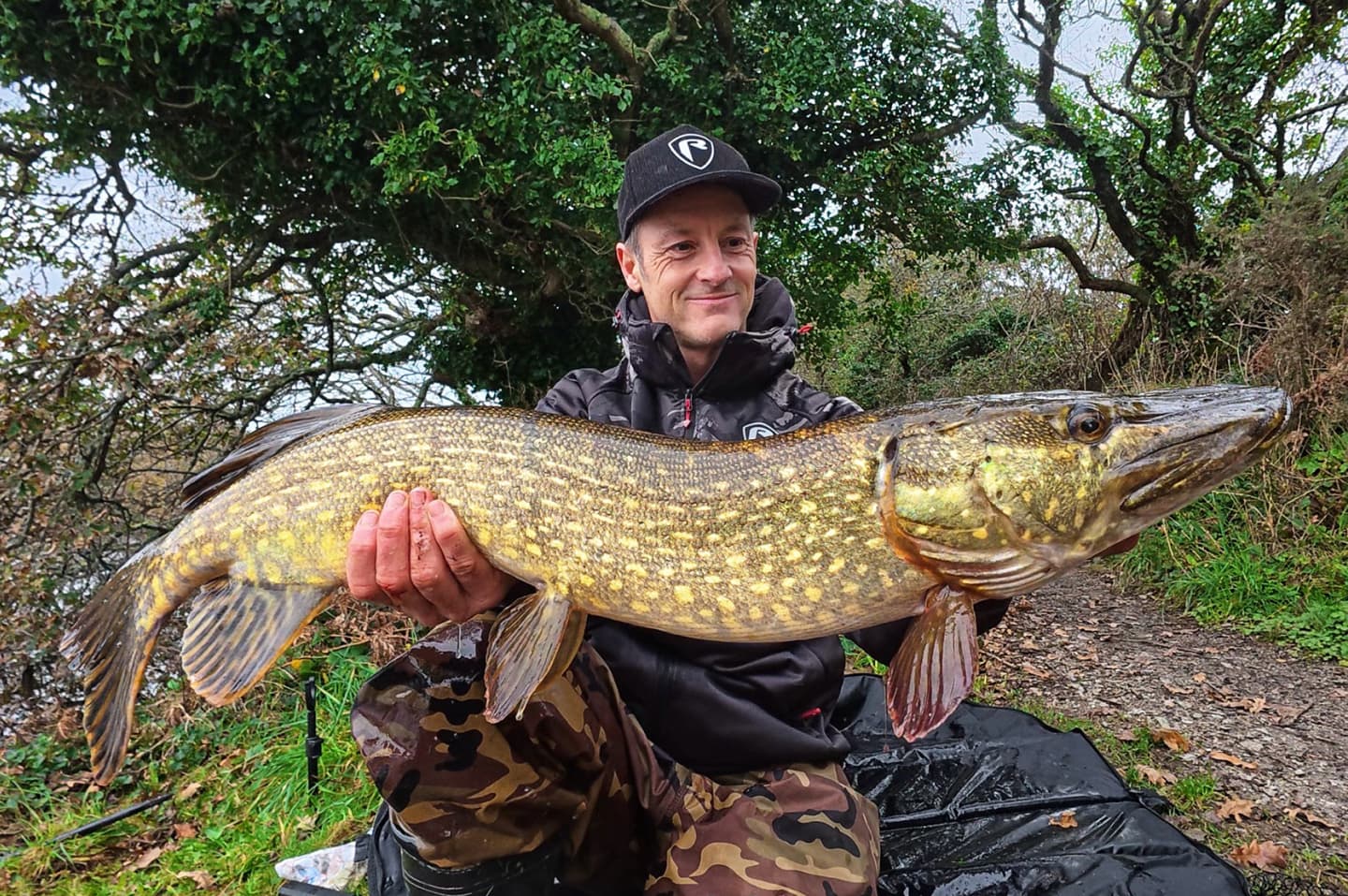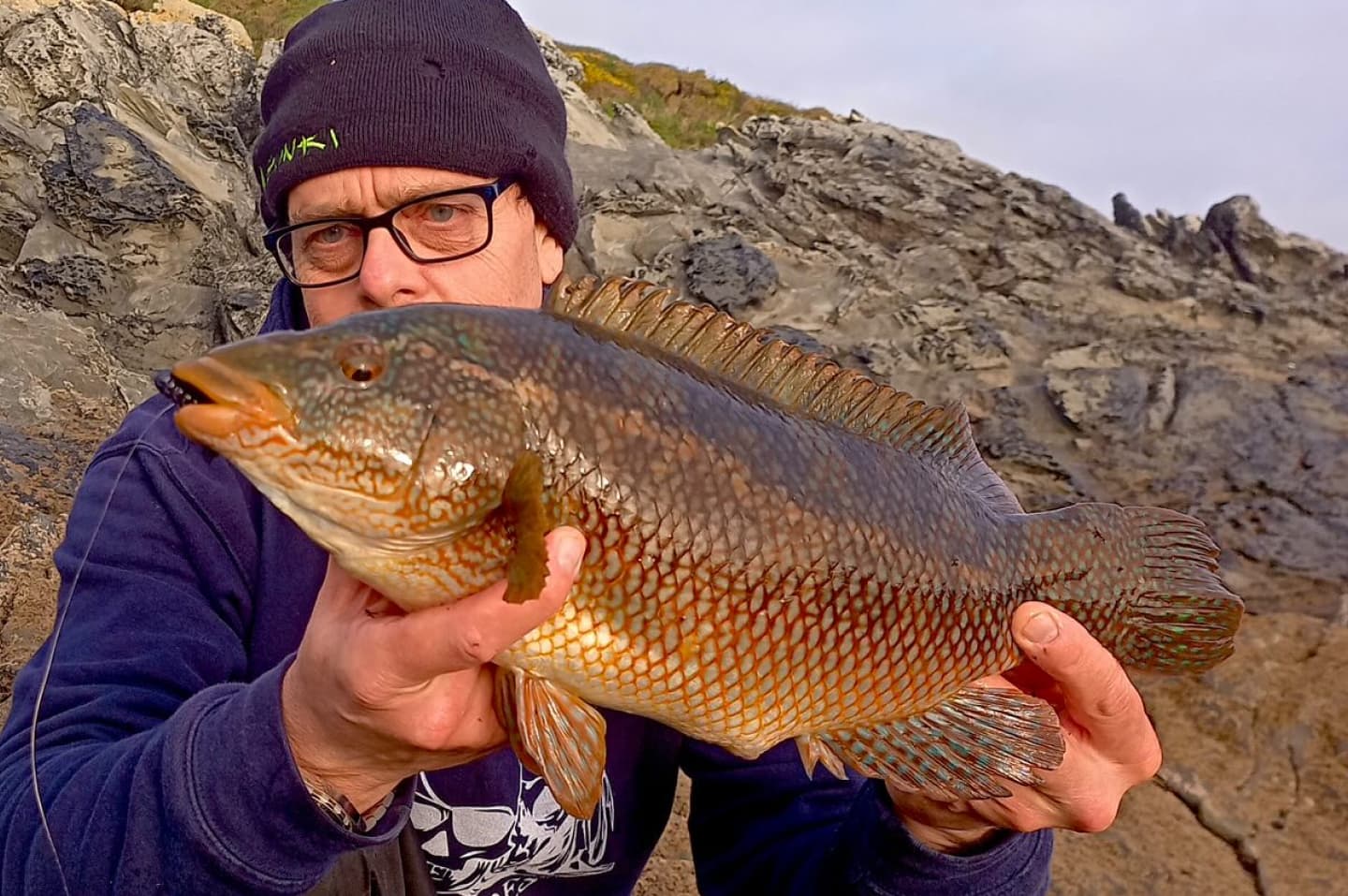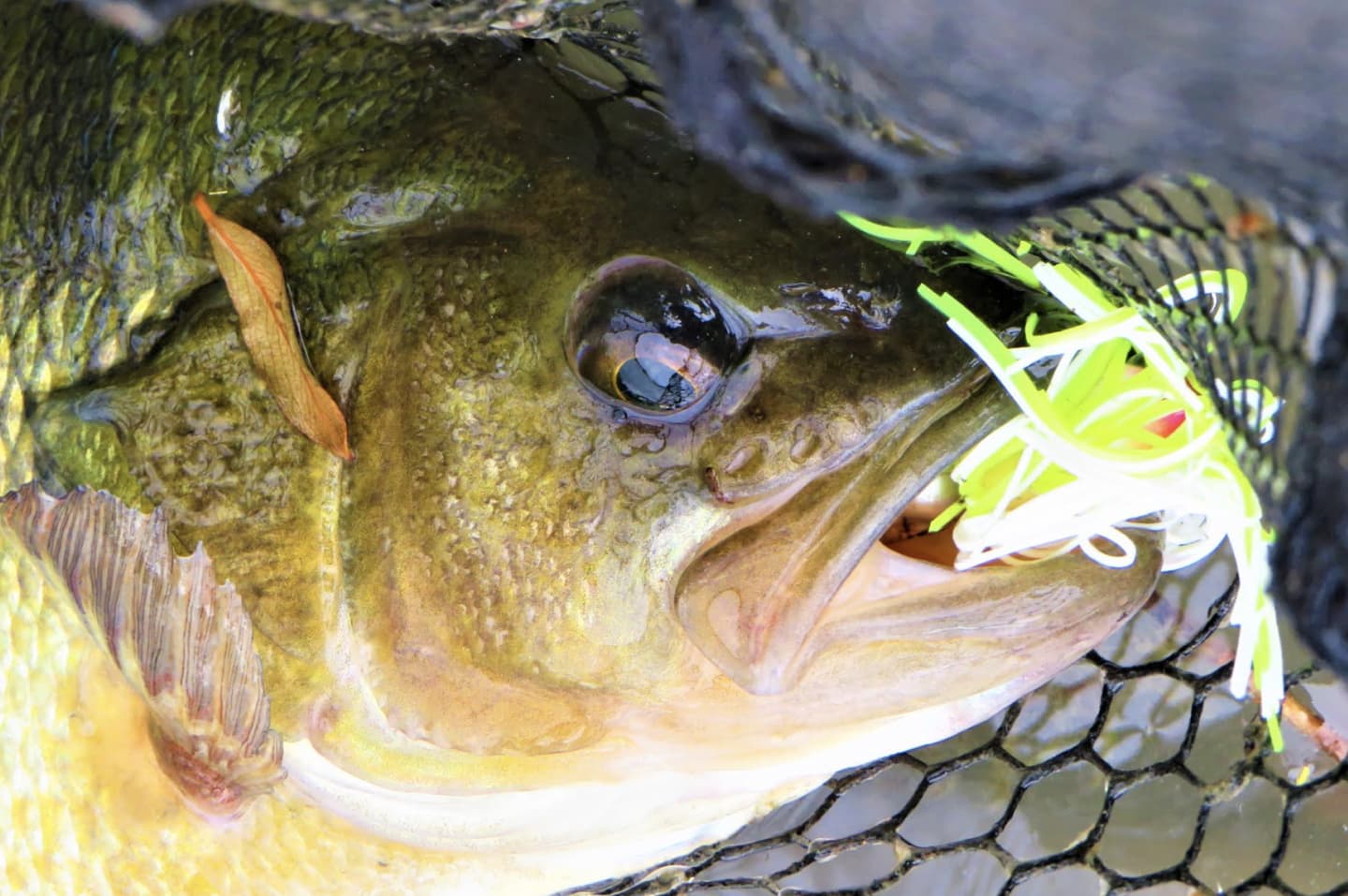
Winter Fishing: A Guide to Lure Fishing with Chatterbaits
Let’s have a natter about a chatter… Chatterbaits, or bladed jigs, are an often-ignored lure by many, considered a chuck-it-and-chance-it lure by others, but also a very valued addition to their lure arsenal by those who have got to understand how chatterbaits work and how effective they can be for lure fishing with chatterbaits throughout the year, especially in winter.
I am fortunate to live close to the Cotswold Water Park with a huge number of crystal-clear gravel pits of all shapes, sizes and depths. One thing that most have in common are giant perch. Whilst present, they are anything but easy to locate and it is very much a case of search and find. This is where I found the value of this lure to find the fish. It is my ‘search and find‘ lure of choice. I use it to find areas where I have perhaps had a hit or two, even better a fish, areas to explore in greater depth that I now know hold fish when chatterbait lure fishing.
Tackle for Lure Fishing with Chatterbaits
Depending on the target species I use a range of rods rated between 12g and 29g. All are fast action with a slightly forgiving tip. I find that this lets the lure ‘work’ whilst also giving you feedback through the tip and blank, plus they are a good hook-setting tool. In terms of style, I will use both spinning and baitcasting.
My spinning outfit is more for perch than pike and zander although it will more than cope should I get an interloper gatecrash the party. I use 16lb 8-strand braid with a 12lb fluorocarbon leader and single-strand titanium wire trace when pike are present. You can go lighter but, in my experience, it will not increase your strike rate and the heavier approach will give you a margin of safety should you hook up with a pike or zander.
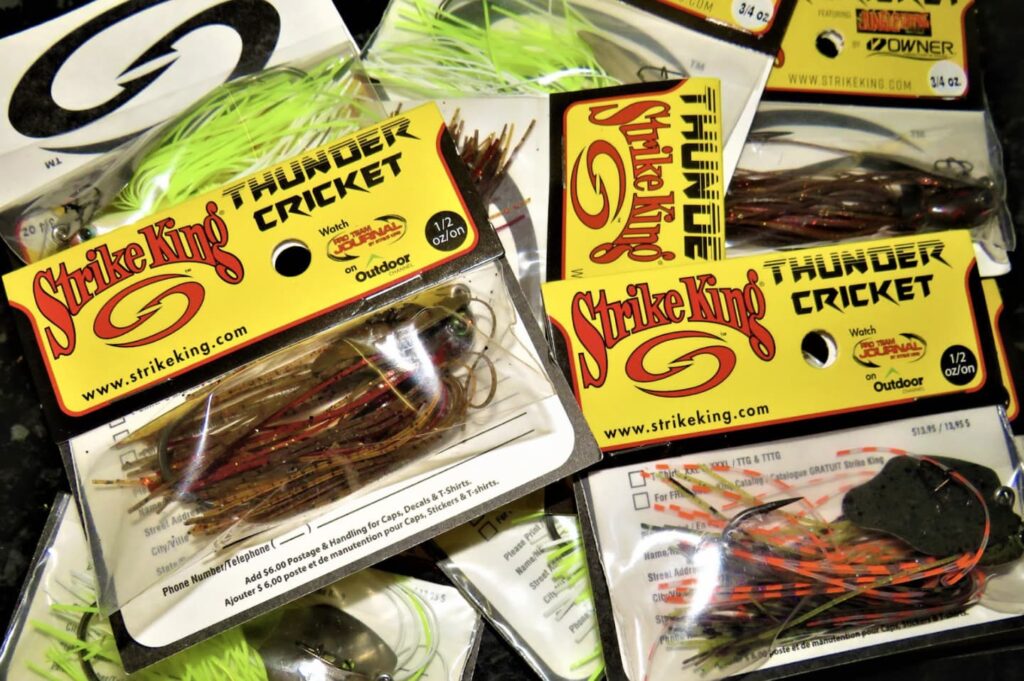
My baitcasting outfits are for heavier weight lures and more zander- and pike-orientated lure fishing. I have two outfits: one loaded with 20lb braid, the other with 30lb braid. I will use 16lb and 20lb fluorocarbon leaders matched to suitable single-strand titanium traces. Some may prefer to not use a leader and tie direct to the trace. Personally, I like the little bit of ‘give’ provided by the use of the fluorocarbon. Chatterbaits come in a wide variety of casting weights, enabling you to cover a large expanse of the water – a key benefit when winter lure fishing with chatterbaits.
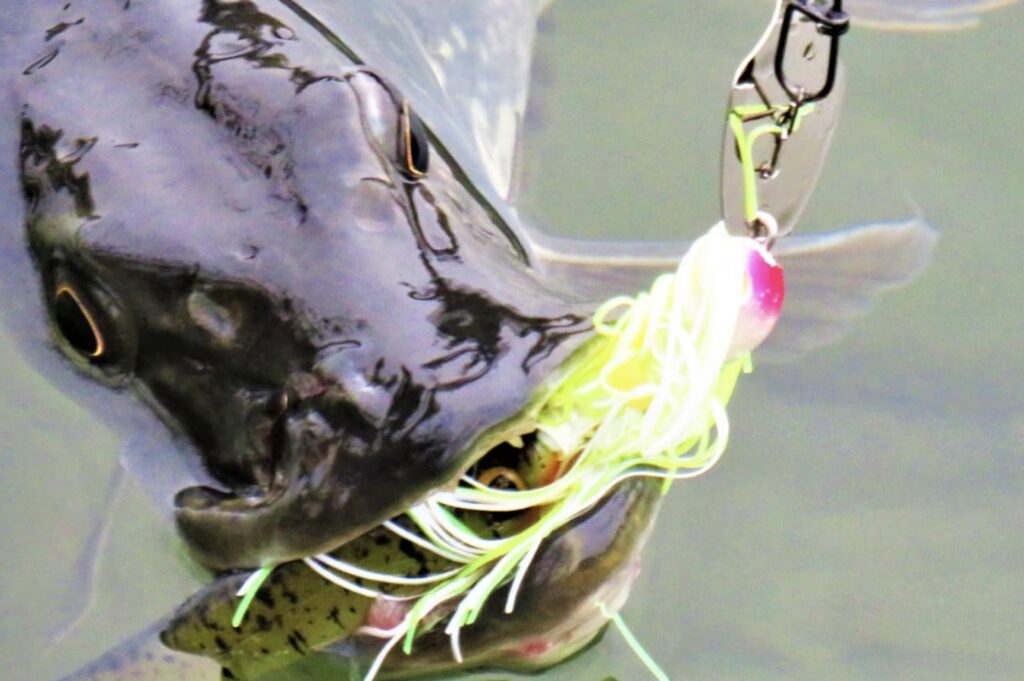
The blade at the front of the lure gives off a visual flash attraction as it falls through the water column, especially effective in those crystal-clear pits. The silicon skirt adds a little more movement and attraction. If you have added a trailer then the pulse of a paddle tail is the final piece… All this before you even start your retrieve! As a result, you will get a number of ‘enquiries’ on the drop down.
One advantage of a baitcasting outfit is the ability to instantly ‘feather’ the lure on the drop, slowing the lure in an arc and increasing your chances of getting a hit as it falls. You can vary your retrieve to suit the conditions and the way that you find the fish wanting it.
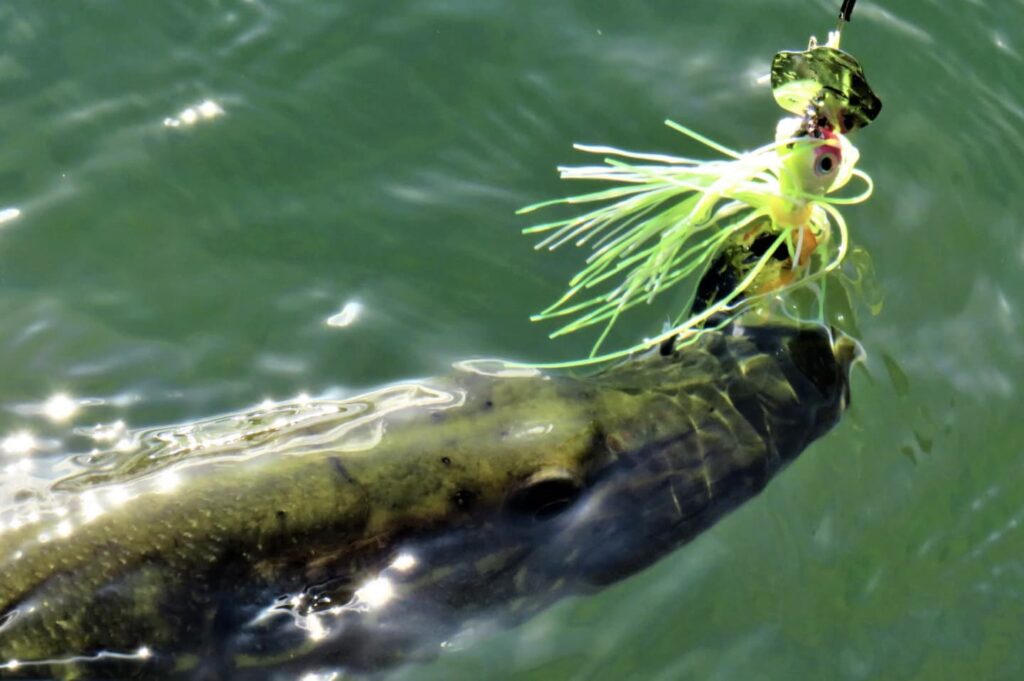
Working the Lure – Getting the Best from Chatterbaits
The single hook set can be effectively worked over weed in most cases. The retrieve is where you bring in the final part of what makes this lure so effective… vibration from the blade ‘chattering‘ at the front end of the lure. You can also tell when you have picked up some weed as the chatter stops. Short jerks of the rod tip often clear the lure of weed and give you that tell-tale vibration once more.
You can work this lure over weed with a ‘high rod’ and cover all depths. In deeper water, a rise of the rod tip to bring the lure up in the water followed by a pause to let the lure drop will often get either a follower to hit or attract a fish at close quarters to strike. Whilst I first found the true value of this lure on the gravel pits, it is equally effective on the rivers, especially so when exploring those deep mysterious weir pools or wide slack bends.
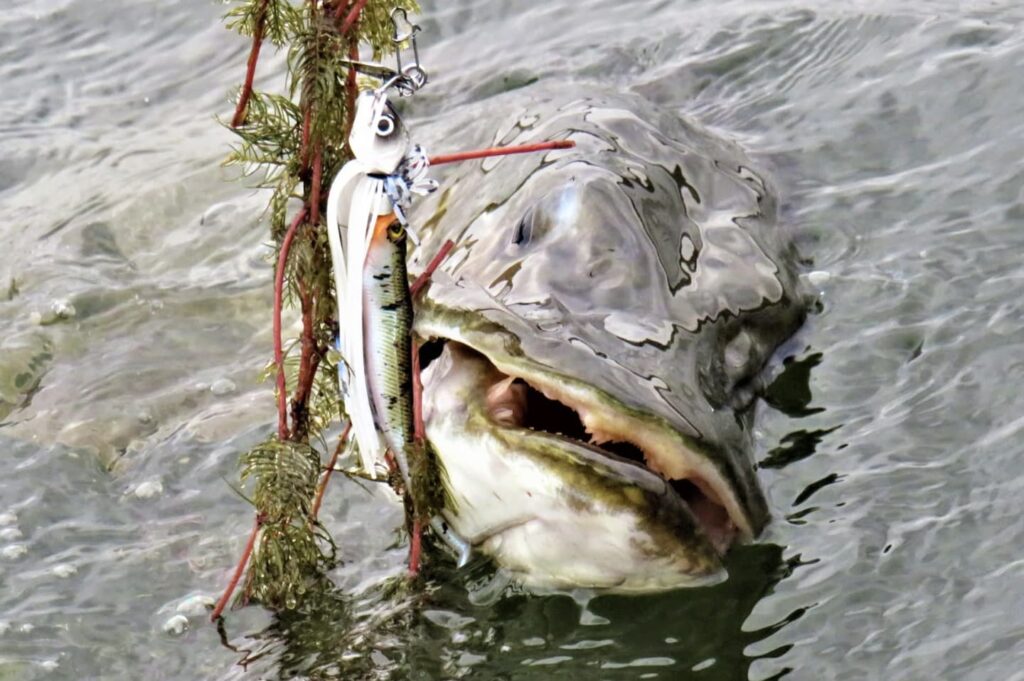
River Techniques for Chatterbait Lure Fishing
Another way that I fish it on the river is upstream. Working it with the flow enables you to keep the lure deeper and sometimes slower, even allowing it to drift in the current before bringing it back to life with a couple of quick turns of the reel handle. Hopefully you can now see that it is definitely not a chuck-it-and-chance-it lure. Whilst I do not fish the big reservoirs a great deal (perhaps not as much as I should do) I have no doubt that they will work so well on those vast expanses of water for zander, perch and pike.
Fine-Tuning Your Chatterbait Setup
So those are the basics, we can now get down to the little things that can often make the difference between success and failure. Head shapes: different manufacturers will use different shapes and this has a huge influence on the action of the lure. Strike King use a more rounded head shape that gives a smoother, less aggressive action than the more pointed shape of the Fox Rage version. The starting action can then be changed by the addition of a trailer.
A shad with a large paddle tail will, for instance, ‘straighten’ the action of the lure and give an added pulse attraction. The addition of a critterbait trailer will give you a bigger visual attraction. The possibilities are endless and I am sure that you will eventually have a selection of trailers that work for you. Whilst I will often work the lure with a trailer, I will also work it ‘naked’ which will give you a more erratic action, one that I find very effective for big perch when lure fishing with chatterbaits.
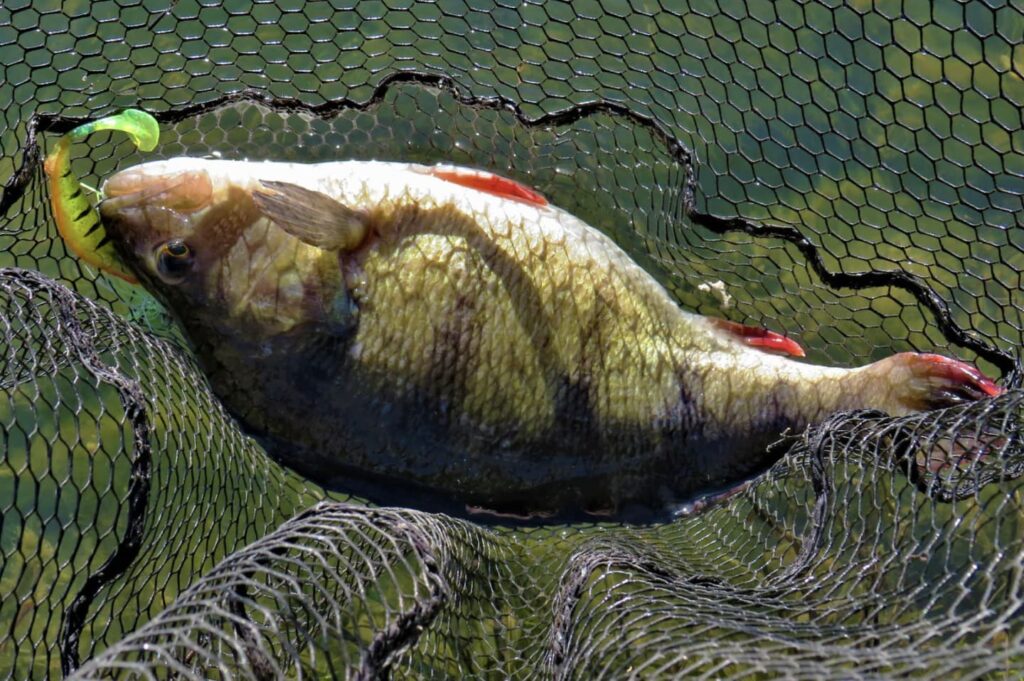
Improving Hook-Up Ratios
A couple of additional things I have found work for me. Hook-up ratios? One of the drawbacks with a chatterbait and single hook is that you can find that you are getting tail hits but not hooking up. For this reason, I nearly always use a single trailer hook attached to the fixed single on the lure. This will really increase the hook-up-to-hits ratio and the number of times that you land a fish just hooked on the trailer will show you the worth of adding one. There are numerous brands with these in their ranges: Gamakatsu, Owner, Strike King to name just three. If tying direct or if making your own traces then leaving the tag end long will help keep any weed you pick up away from the blade and keep the lure chattering.

Personal Successes with Chatterbaits
Some of the reasons why I rate this type of lure so highly… It has caught me perch to 4lbs 12ozs, river pike to 20lb and, when guiding, a 5lbs 12oz pb for the angler I was guiding. Probably one of the favourite fish I have seen landed on a chatterbait was fishing partner Matty Gale’s first ever zander on the Severn, it weighed 12lbs 12oz. Not a bad start!
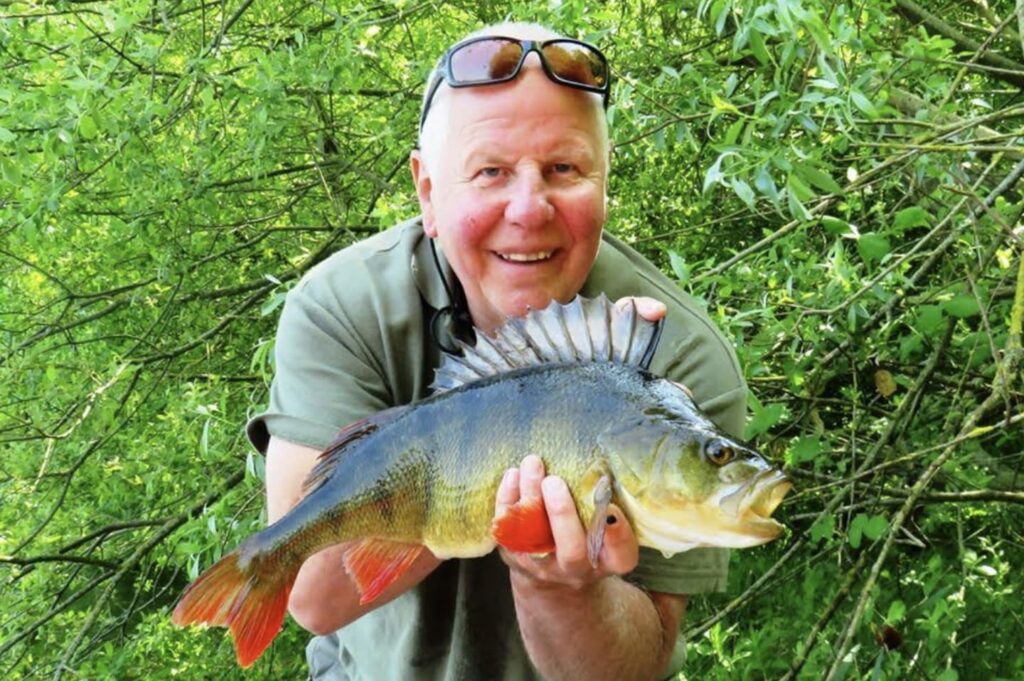
Conclusion – Why You Should Try Lure Fishing with Chatterbaits
So I hope that you have enjoyed our ‘natter’ on a ‘chatter’ and that it has given you a few ideas to hopefully try one for yourself. Lure fishing with chatterbaits is far from basic, it’s a highly versatile, search-and-find method capable of tempting perch, zander and pike all year round. I filmed a short YouTube video for Fox which shows many of the different actions I have described here. You can find it at:
https://www.youtube.com/watch?v=MbwMO4HZUdY&t=57s
Tight Lines!

